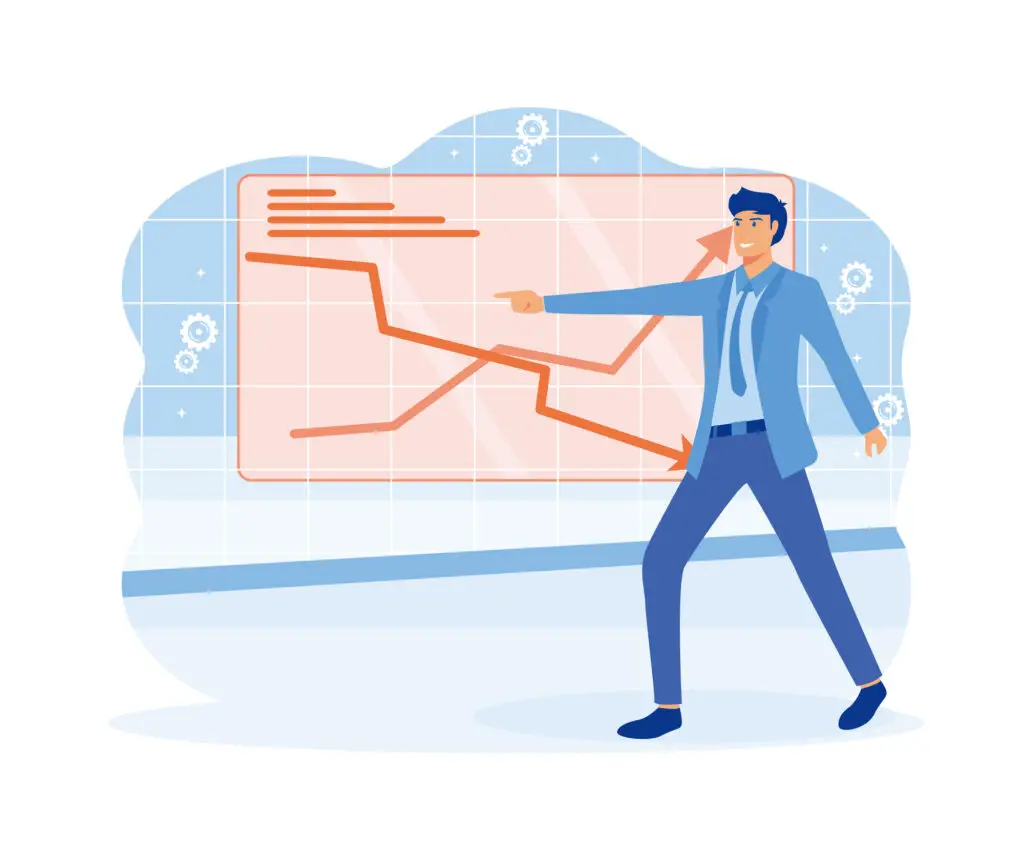 From 1973 to 1982, the U.S. economy experienced stagflation, which is a period of high inflation combined with low economic growth. During this period, consumer demand was low and unemployment ran high. A number of economists say they’re seeing similarities in today’s economy and that we could be in or about to enter a period of stagflation. We have high interest rates—a reflection of high inflation—that just aren’t coming down despite efforts by the Federal Reserve. And consumer confidence, which translates into demand, is at its lowest point in two years. Even Treasury Secretary Yellen said in 2022: “Higher food and energy prices are having stagflationary effects, namely depressing output and spending and raising inflation all around the world.”
From 1973 to 1982, the U.S. economy experienced stagflation, which is a period of high inflation combined with low economic growth. During this period, consumer demand was low and unemployment ran high. A number of economists say they’re seeing similarities in today’s economy and that we could be in or about to enter a period of stagflation. We have high interest rates—a reflection of high inflation—that just aren’t coming down despite efforts by the Federal Reserve. And consumer confidence, which translates into demand, is at its lowest point in two years. Even Treasury Secretary Yellen said in 2022: “Higher food and energy prices are having stagflationary effects, namely depressing output and spending and raising inflation all around the world.”
My memories of the 70s
Many of you reading this weren’t even alive when stagflation was the norm for many years, but I remember it well. There were long lines at gas pumps and you were only allowed to fill up every other day (your assigned day was based on your license plate). Interest rates were very high, much higher than today. The mortgage rate on my home was 15.3% until rates dropped and I was able to refinance at a lower rate. The unemployment rate reached 14.5% in April 1980 and inflation reached 14.6% in that year.
The Ford Administration tried to “Whip Inflation Now” (WIN buttons were everywhere). The Carter Administration fought stagflation by such measures as tightening monetary policy (through the actions of Fed Chairman Paul Volker) and imposing austerity spending (though executive orders). Eventually, the economy began to improve. The turning point in my mind was the “Miracle on Ice,” when the U.S.A. ice hockey win in the Winter Olympics in February 1980. This wasn’t an economic event and I can’t tie this to any numbers; it was something to help change everyone’s feeling of malaise described in President Carter’s speech.
What can your business do during stagflation?
Stagflation isn’t something that goes away overnight. Without a crystal ball, there’s no target date for an end. You need to adapt your business strategies to survive and, hopefully, thrive despite stagflation. I asked ChatGPT how to do this and I get 10 suggestions (the 10 items are ChatGPT; the explanations are mine):
- Cost management. Review your spending and projections. Reduce spending where you can. For example, if your lease is about to come up for renewal, renegotiate with your landlord to reduce rent going forward.
- Price flexibility. You may be tempted to raise prices (or even forced to do so) as the prices you pay for everything is going up, but look for alternatives. Consider: discounts, sales, bundling.
- Diversification. Create new revenue streams and opportunities. Identify markets that may be better than others (e.g., perhaps some overseas locations).
- Customer focus. Tailor the customer experience and create brand loyalty. With AI tools, customers can receive unique information.
- Operational efficiency. Deploy AI and other tech tools to help you save time and money. Cut waste (e.g., drop unneeded subscription services).
- Cash flow management. Monitor your money so you can pay bills when they come due and maintain a good credit rating. Use cash flow monitoring apps to help you.
- Employee morale and productivity. The feeling of malaise that blanketed the U.S. during the last period of stagflation may return, so watch your workforce. Bring employees into the conversation and listen to what they say. When the unemployment rate rises, employees may not be quite to leave a company, but a malaise can depress productivity…something you want to avoid.
- Adaptability and agility. Because no one knows when economic conditions will improve, you continually have to make changes.
- Government assistance and grants. During the last period of stagflation, the federal government offered various incentives to help businesses. For example, the Revenue Act of 1978 cut tax rates on individuals and corporations, created the targeted jobs act to reward businesses that hired individuals from certain categories, and made the investment tax credit permanent. Perhaps similar programs, including tax incentives, will arise now.
- Long-term planning. Continue to do strategic planning and be ready to act upon plans tied to an improved economy.
Final thought
“In three words I can sum up everything I’ve learned about life: it goes on.” ~ Robert Frost
Again, no one knows whether or to what extent we’ll have a period of stagflation. It won’t go away overnight, but what’s certain is that it will end. Be prepared. Stay positive.
To find additional posts about the economy and your business, look here.


